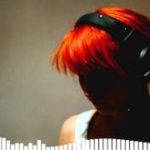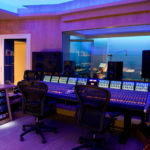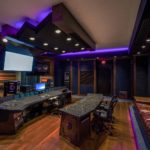This is where LHS students learn how to play musical instruments.
–
Table of Contents:
- Introduction
- Where Our Instruments Come From
- Class Length
- Progression
- Genres/Styles We Teach
- Vocabulary
- Reading and Writing Sheet-music
- Instruments of Classical Orchestras
- Instruments of Disc Jockeys (DJs)
- Instruments of Rock Bands
- Instruments of Marching Bands
- Instruments of India
- Instruments Not Taught
- Cymatics and Harmonics
- Homework and Rentals
- Dress Code
- After Graduation
–
Introduction:
Our school’s band classes are fun, and play only the catchiest of tunes, never just what is prescribed for typical Outlander football game show-offs. Instruments include those used by classical orchestras (such as the piano and violin), DJs (such as the turn-table or mixing-table), rock bands (such as the electric guitar), and marching bands (such as the chest-mounted drums and tuba). Inisfreean girls are always present in each class to serve as teachers and fellow students. If there’s a rare musical instrument you’d like to learn, just ask! (We can 3D-print it for you if it isn’t already available from our on-campus storage.)
The playlist on this webpage has some of the many songs offered as lessons in our school. You can practice/cover many other songs, too. Name the song to the nearest Inisfreean, and she can access its sheet music and other information immediately for you.
Liberty High School‘s band classes don’t just get you ready for marching band or a career in music; they teach you the science of sound, such as how harmonics can be used to levitate and place heavy objects. By the time you graduate from our band program, you’ll be able to play a variety of pieces on a variety of instruments, use music for construction and defense, and even compose your own works –even with synthesizers for techno! Inisfree’s band classes are the most comprehensive and eye-opening (or ear-opening) in the industry.
And if you know anything about cymatics (such as how sound –certain frequencies or notes– can be used to instantly arrange particles of sand or other mediums into repeatable stable patterns), you know exactly how we are able to build, repair, and unify people so effortlessly, precisely, and in the most fun of ways –even by just softly moaning certain tunes while we have sex with them. This is Inisfree. Welcome to Band.
–
Where Our Instruments Come From:
We have 3D-printers here in our school building which were built specifically to make all of the musical instruments and tuning equipment used in this class. The Inisfreeans (ICVs) service them. They are also part of our self-aware (A.I.) network / collective-consciousness; they can self-diagnose, fine-tune, and maintain/repair themselves.
To have the instrument or related device you need made by one of them, simply ask or think it to/near one of the ICVs teaching this class, and the available nearby 3D-printer will respond (i.e. make it for you).
Due to how advanced our 3D-printing is, depending on the size and complexity of the instrument, it will probably take a matter of minutes for it to be ready. (Only our vehicles and airships take hours to days to 3D-print; anything as small as a man-portable device takes far less time.)
–
Classrooms Layout:
Our school building has multiple floors with space available for band/music lessons and solo practice; floors 1 through 10 all have devoted areas, with soundproof individual study rooms on floors 46 through 50.
Each of the classrooms we use to teach this subject has a stadium-seating risers/stands-based setup along the back wall, creating an almost-auditorium terracing.
Musical instruments are kept in wall-lockers which are arranged in an upper and lower row along one of the side-walls.
Backpacks and other school materials can be kept on shelves on the opposite side-wall, preventing clutter and tripping hazards on/near the risers/stands.
Band/music classrooms also have soundproof ‘boxes’ which can be used to help/better identify the vocal range of each student.
The 3D-printers we use are located in our floors reserved for storage; 21 through 25. Additionally, 3D-printers on our Shop-class floors (37-40) may be used.
–
Class Length:
Each of these classes is 30 minutes. That time is typically divided into portions for 1) the teacher to explain the day’s tasking, 2) warming up, 3) rehearsing, 4) solos or soundproof-‘box’ work/time, and 5) cooling down (including putting instruments back in their lockers, etc.).
Mingling/chatting is to be done before and/or after class, such as during the walks/climbs between classes/floors.
–
Progression:
In grade 1 of our school system/building, students are shown all of the musical instruments we can teach here. The teachers do the performing. Students get to try out each one, then we wait for them to naturally gravitate to one or two, just for starters.
Since everyone in Inisfree is at or above the age of sexual maturity/readiness, many, if not most, of them are big enough to handle even our bigger/biggest musical instruments, such as the tuba. Those who are not big enough for things like that are advised to either wait until they are before trying to learn/play them, or, if they are not expecting to grow to that size, to choose other instruments. We won’t tell them not to try an instrument at all, but we don’t provide add-ons to help very small students carry/play very big instruments they simply aren’t sized/designed for.
By the 11th grade, students have mastered many aspects about the one or two instruments they have chosen to focus on, and are ready for things such as music theory for/regarding that/those particular instrument/s.
By the final grade hosted in this building (the 16th), students are able to compose their own original pieces (sheet music) for the instrument/s they have stayed focused on.
We progress students similarly through the genres/styles of music; they start with the easiest ones, taking their time before trying out the more-challenging ones (such as Jazz and Big Band / Swing; fast and complex).
- Definitions
- Flute (in Wind), harmonica (no kazoo)
- Xylophone (in Percussion)
- Piano (in Percussion)
- Harpsichord (in Percussion)
- Pipe Organ (in Wind)
- Bass Guitar (in Strings)
- Guitar (in Strings), (same)
- Drums (in Percussion)
- Hand Bells (in Percussion)
- Strings (Violin, Cello, Harp)
- Wind (Oboe, Trumpet, Saxophone, clarinet, French horn, trombone
- Exodus
- Tuba (in Wind)
- Music Theory, bag-pipes (in wind)
- Symphony Composition
–
Genres/Styles We Teach:
- African
- Ambient
- Big Band / Swing
- Blues
- Country and Folk
- Electronic / Techno and House
- Indian (India)
- Indie
- Island
- Jazz
- Marching Band
- Native American
- Pop / Hip-hop
- Reggae
- Rock & Roll (including Alternative, Classic, Grunge, Hard, Punk, etc.)
- Symphonic Orchestra
–
Vocabulary:
- a cappella
- accelerando
- accent
- accidental
- accompaniment
- adagio
- Aeolian
- allegro
- alto
- baritone
- bass
- bass clef
- basso
- crescendo
- cymatics
- decrescendo
- duo
- dynamics
- falsetto
- forte
- harmonics
- indie
- octave
- rubato
- scale
- scherzo
- score
- sonata
- soprano
- soprano clef
- step
- strophe
- subdominant
- submediant
- subtonic
- supertonic
- syncopation
- tablature
- tempo
- tenor
- ternary
- timbre
- time signature
- tonic
- treble
- treble clef
- tremolo
- triad
- trill
- troubadour
- twelve-tone system
- variation
- verse
- vibrato
- virtuoso
- vivace
- waltz
- whole note
- whole tone
- woodwind
Some of those definitions are in this list.
more TBA…
–
Reading and Writing Sheet-music:
We start with popular simple/short pieces, very gradually progressing, year by year of this course, until later classes which have only the most-complex of such written forms of musical compositions.
For fun, one visual aid, in an early-on class of this course, is a photograph of the waterproof notepad music-notes scale the High King made between missions in Iraq; this visual aid is to show how easy it is to figure this stuff out, how necessary it is in some cases, and how helpful it is at jogging the memory of long-ago creations/songs.
–
Instruments of Classical Orchestras:
- bass
- bassoon
- cello
- chimes
- clarinet
- conga
- didgeridoo
- flute
- French horn
- gong
- harp
- harpsichord
- maraca (handheld shaker)
- oboe
- piano
- pipe organ
- ‘singing bowls’ (a.k.a. Himalayan or Tibetan bowls)
- tambourine
- timpani drum
- triangle
- trumpet
- viola
- violin
- xylophone / marimba / glockenspiel
–
Instruments of Disc Jockeys (DJs):
- headphones
- laptop / DJ software
- mixing-table
- turn-table
- synchronized lighting
- synthesizer
–
Instruments of Rock Bands:
- acoustic guitar
- amp
- cow bell
- bass guitar
- drum set
- electric guitar
- keyboard
- saxophone
- subwoofer
- theremin (the classic Beach Boys sfx)
–
Instruments of Marching Bands:
- chest-mounted drums
- piccolo
- mellophone (a.k.a. ballad horn, concert horn, mellohorn, or tenor cor)
- snare drum
- timp toms (set of usually four waist-level small drums)
- trombone
- tuba
–
Instruments of India:
- harmonium
- mridangam
- pakhawaj
- sarod
- sitar
- shehnai
- tabla
–
Instruments Not Taught:
These can be taught by individuals outside LHS. We are not opposed to using/teaching these instruments. We just haven’t had a need/demand for them yet.
- accordion
- bagpipes
- kazoo
- recorder
- steel/Space drum
- ukulele
–
Cymatics and Harmonics:
Cymatics is a subset of modal vibrational phenomena. The term was coined by Swiss physician Hans Jenny. Typically the surface of a plate, diaphragm, or membrane is vibrated, and regions of maximum and minimum displacement are made visible in a thin coating of particles, paste, or liquid.
–
-
PHYSICS
-
ASTROLOGYa division of the zodiacal circle by a specified number, used in the interpretation of a birth chart.“the fifth harmonic”
…
2024 May:
F-sharp is said to be the resonate frequency of the center of the Earth. It is the note that is in the great pyramid/s. It is what the Hopi tune their sacred flutes to.
What other notes are special like that?
Do other worlds have their own global indefinite natural frequencies?
Why tune musical instruments and buildings to the note that the world they are on naturally produces/maintains? Why match it instead of harmonizing or using other notes?
..
Shall we tune our own buildings to F sharp, and shall we re-tune them when our city relocates to other worlds?
..
Sacred Sonometry; like sacred geometry, just with sounds (not necessarily enough to be considered music; individual notes that work very well / perfectly at certain things)
“Ancient Egyptian texts indicate that this F-sharp was the resonant harmonic center of planet Earth.”
..
What is the frequency of f sharp?
approximately 369.994Hz
F♯ (F-sharp; also known as fa dièse or fi) is the seventh semitone of the solfège. (E-double sharp). When calculated in equal temperament with a reference of A above middle C as 440 Hz, the frequency of the F♯ above middle C (or F♯4) is approximately 369.994Hz.
365 days
Was 370 the original number of days in a year?
–
Homework and Rentals:
We almost never ask that students do anything at home beyond what they would want and volunteer for, so ‘checking out’ any of our instruments is uncommon, though not forbidden. To borrow/’rent’ one of our musical instruments, just ask your ICV (teacher). Return them each time you return to class, and otherwise keep them in your wall-locker in the classroom.
*Playing a musical instrument anywhere in Inisfree where neighbors, or anyone attempting to meditate or sleep, might here it is not allowed, and ICVs nearby will politely inform anyone of this, should ever the situation seem like it might arise. ‘Street music/performing’ is allowed in a few places, such as our downtown area, as long as the ICVs can tell that the High King would enjoy it.
–
Dress Code:
As Inisfree is predominantly a nudist colony and pleasure city of fully compatible people, and as was detailed on the ‘parent page’ (directory) for this school of ours, female students and teachers are required to be in perfect shape and wear only either sexy feminine diaphanous couture or nothing at all, and male students (and we have no male teachers, by the way; only ICVs, which are all female) are required to wear something masculine which at least covers their genitalia. The only other things which can be worn here are those such as guitar picks or other add-ons which help in the playing of these musical instruments (like a marching-band drums-harness, for example). We do not have marching-band coats or hats, and things such as helmets and masks, and anything which would cover up or otherwise conceal a sexy female body, are not allowed.
–
After Graduation:
You’ll find many of our class graduates performing live at our city’s Performing Arts Center, as well as in other venues, such as during our Outdoor Raves and the Welcoming Ceremonies. They also help us compose music for the shows and motion pictures we produce at WMKM Studios around the other side of our realm’s central mountain. All the greatest music expertise in Inisfree starts right here!
–
–
Also see:
- 432 Hz and 528 Hz EXPLAINED: The Most Powerful Frequencies in The Universe
(pardon the retarded title; they have not been to the whole universe, so they have no clue if these frequencies have any power at all out there)
(and: minus the relig’tard attempted-corruption love-lie; respect for all the emotions is the way, not polarization to one just because it sounds good/nice to the incompetent/lazy/imbalanced) - Tony Ann of Toronto, rapid piano
- music Ruben-tube flames to show soundwaves
–
Also:
_





